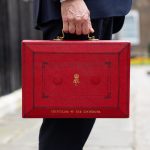The world's finance is reaching a new level, where countries and people can communicate via digital networks more frequently than via banks or governments. Ethereum is the center of this change because it is not a mere blockchain platform but also an economic innovation engine. The Canadian dollar, in its turn, shows a conservative, traditional economy, which is based on resources and powerful institutions.
Their relationship exposes the invisible forces behind inflation cycles and regulatory choices. It also shows how ordinary people, armed with nothing more than an internet connection and platforms like Paybis, can participate in financial movements once reserved for institutions.
To understand the future of Canada’s financial landscape, the interaction between Ethereum and the CAD must be viewed not just as a price chart but as a story of two worlds colliding and reshaping each other.
Ethereum as a global liquidity beacon
Ethereum is a gravitational force in digital finance. Capital is drawn towards it when global systems rock, when new possibilities arise, or when technologies threaten to transform life and markets. That is why the ETH to CAD relationship often behaves like a weather forecast; it reflects changes long before they appear in traditional economic data.
During global shocks, Ethereum rarely stays quiet. Canada, being a highly interconnected economy, feels this impact immediately. When global uncertainty rises, Canadian investors often move toward Ethereum as a flexible, borderless asset.
Exchanges such as Paybis play a crucial role here. They act like ports in a global sea of liquidity, allowing Canadians to move in and out of Ethereum without delay. This frictionless access strengthens the asset's influence, making Ethereum a kind of global pulse that echoes right through the Canadian financial system.
The Сanadian dollar: a currency shaped by nature and policy
Few currencies are as closely tied to the natural world as the CAD. Oil booms, resource exports, and commodity cycles breathe life into it. When energy prices rise, the CAD often grows stronger. When global demand weakens, the CAD loses altitude. Ethereum belongs to a borderless digital world, while the CAD draws power from the ground beneath Canada’s forests and pipelines.
When the CAD is strong, Canadian investors often explore Ethereum out of curiosity or for long-term planning. But when the CAD weakens, something changes. Ethereum begins to look more like a lifeline, an asset unburdened by national economic cycles. Moments like these often lead to noticeable increases in crypto activity, with platforms like Paybis serving as a reliable entry point.
The strength or weakness of the CAD, therefore, does not just influence purchasing power; it shapes how Canadians perceive the future of money itself.
Regulation: Canada’s pursuit of order in a wild digital frontier
It is embraced in some countries, dreaded by others, and many people are unable to make a decision. Canada, on the other hand, has a tendency to move in a systematic way. It is not aimed at stamping out innovation but rather molding it into something long-lasting and transparent. This clarity encourages long-term participation and reduces fear of sudden legal changes.
In the case of companies such as Paybis, companies can provide consistent services without fear of sudden changes in policies. This is also beneficial to investors who can be confident that they are not in the grey zone by purchasing or holding Ethereum, as it is in line with national standards.
Canada’s regulatory approach forms a quiet backbone for the ETH–CAD relationship, making it more predictable than in many other countries.
Ethereum adoption: a cultural movement as much as an economic one
Ethereum adoption in Canada is rising, but not for a single reason. It is growing because Canadians see Ethereum differently today than they did five years ago. For others, it is the backbone of digital ownership through NFTs or gaming economies.
Paybis amplifies this trend by making entry easier. It becomes a symbol of the digital future, not just a speculative token. As this cultural shift deepens, its interaction with the Canadian dollar becomes increasingly influential.
Global inflation and divergent monetary strategies
The world is going through a strange period, with inflation levels spiking erratically, central banks at odds over interest rates, and the global supply chain is still weak.
When the U.S. raises rates aggressively and Canada moves more slowly, the CAD can weaken. Ethereum, however, often moves to its own rhythm. A weaker CAD makes ETH more expensive, but that does not always reduce demand; instead, it can intensify interest as investors search for assets that feel less tied to national policy. For Canadians seeking stability during volatile market periods, many also choose to buy USDT as a temporary haven before converting funds into Ethereum.
During these periods, platforms like Paybis often see a noticeable increase in activity. People react quickly, seeking opportunities during volatility or protecting themselves against uncertain monetary futures.
In this sense, Ethereum is not only a financial asset but also a part of how Canadians interpret global risk.
The future: Ethereum as an economic infrastructure layer
Imagine a future where Ethereum isn’t just traded but quietly powers parts of the Canadian economy:
- Tokenized stocks and bonds
- Blockchain-secured supply chains
- Digital IDs for public services
- Smart-contract-based business agreements
- Instant cross-border payments
Canada’s early adoption and clear regulation could position it as a leader in this transition.
Final say
Ethereum represents global liquidity and borderless possibilities. The Canadian dollar represents stability and the tangible resources of a nation.
Their interaction reveals how Canada adapts to global change and how digital assets enter the everyday financial landscape. With regulation maturing and platforms like Paybis making access effortless, the ETH–CAD relationship will only grow more significant.














